|
As my two-year-old son was playing on a crowded playground, he made a quick dash to climb up a ladder. I instantly sucked in a deep breath as he lumbered his way awkwardly up the steps. The urge to jump in and help him was strong…but I held back, only staying close by in case something went terribly wrong. As he made it to the top of the ladder and turned around to give me a smile, my heart skipped a beat with pride; I was relieved that I had held back and allowed him to figure it out himself. This post originally appeared on A Fine Parent. It is a natural instinct for parents to want to protect their children from adversity. While my son is young and adversity comes in the form of a playground ladder, I can imagine how this will shift and evolve as my son gets older. Learning basic motor skills and tackling self-care will move to making friends, being successful in school, overcoming peer pressure…and the list just goes on. Our children MUST learn how to be resilient in order to find success and overcome the obstacles they will face as a human. If we sweep in to save our children from every bit of difficulty, we actually do them a disservice. We send the message that when life gets tough, someone will always help you out of it and that failure is a scary and negative thing. In reality, one of the best things we can do for our children is to allow them to struggle, as it provides the chance to reframe failure. Every hard moment or struggle is an opportunity to learn resilience! Resiliency does not usually come naturally to our kids. We, as parents, can help them overcome difficulty – although this may also not come naturally to us! Most of us likely say or do things, at times, that unintentionally get in the way of raising gritty, independent kids. Here are 5 things we should stop doing right now to raise resilient kids! Stop: Saying “Be Careful”I’m guessing I’m not the only one who has had a playground moment in which the “be careful” has been on the tip of your tongue a million times over. If you are anything like me, you are not always successful in biting your tongue. Children learn best through interactions with the world and sometimes those interactions are through risks. While we certainly want our kids to be safe, the phrase “be careful” doesn’t help with that because:
Instead, we want to expose our children to difficulty and risks while also managing to guide them through it safely. Let’s go back to our playground example. When we see our kid looking to climb up a ladder, we can walk (or scurry!) quickly over to them and say something like: “Wow, you are taking a risk! You got this. Tell me about your plan to get up. What’s next? Are you going to grip onto the ladder tightly and pay close attention to where you put your feet? Ok good. Does this feel safe to you? I will be right here watching if you start to feel not safe. Otherwise, I believe in you to get all the way to the top.” Let’s break this down to understand the importance of the key phrases:
Eliminating “be careful” from our vocabulary won’t happen overnight, but we can start to practice other ways to offer support and overtime, our confidence in allowing our kids to take risks will start to grow. Stop: Providing Constant EntertainmentOne of my favorite authors, Matthew Kelly, constantly discusses how we need to sit in the classroom of silence. It is there where we can find the answer to some of life’s greatest questions and challenges. We can sit with our thoughts and come up with solutions or think up new ideas. The same is true for our children. They don’t need constant entertainment handed to them; doing so will create a roadblock to building resiliency. The modern world of TVs, phones, devices, the belief that children need to be involved in 1.34 million extracurricular activities, and then the parenting guilt that can make us feel we are failing if we don’t constantly provide games and activities for our children to engage in can greatly interfere with allowing a child to be bored. Allowing our children to be bored is actually a good thing. Here’s why:
When we allow our kids to be bored, we may actually start to see personalities that are far from boring because our kids have had a chance to explore the world and tap into resiliency skills. Stop: Buying Random ToysSusie from Busy Toddler reminds us that not all toys are created equal, and it is so true! There is such a thing as good toys and bad toys. We want to buy toys that let kids lead instead of ones that do the work for them or are simply the hot new item that serves little positive purpose. A toy that allows a child to lead is one that:
Taking the extra time to research toys and gifts instead of blindly buying whatever we first see can help ensure that the toys our children are playing with are encouraging the development of resilience. We may also find that the best kind of play comes from engagement with materials and items that are not even considered toys. A recent Harris Interactive survey found that 95% of teachers believe that hands-on learning increases confidence, and with confidence comes resiliency. While hands-on learning is more regularly promoted within schools, it can happen at home too, and does not need to involve fancy or expensive toys. For example, we can encourage play using regular household items such as:
If you’ve ever bought your child an expensive toy only to find them playing with the box it came in, then you know that when given the opportunity, children will play with almost anything. The possibilities are endless! Stop: Believing Your Example Isn’t ImportantI had to caution my husband to stop using the phrases “That was stupid,” or “I’m so dumb,” whenever he would mess up. If our kids start to think that mistakes are associated with being dumb or stupid, they are less likely to take risks or try something hard for fear of being those words. While our son has thankfully not yet repeated those phrases, I have witnessed him mimic the sounds I make when I struggle to open something like a pesky lid on a jar. I grunt, make noises like “Errrr” and start yelling at the object. I noticed my son does the same when he is trying to get his toys out of the closet, and he can’t quite get them unstuck. Watching him copy my behavior in the face of adversity is a good reminder that if we know our kids are watching us during those moments, of course they are also watching during our less than stellar moments. The social learning theory revolves around the idea that people learn by watching others. Perhaps the most well-known test of social learning theory and parent-child behavior is the famous Bobo doll experiment. This experiment found that children most often exhibited the same behavior towards the Bobo doll that they witnessed the adult exhibit–whether it was aggressive or kind. Given the impact that our actions clearly have on our children, it’s time to allow them to catch us failing! Whether we really make a mistake or make a fake one to teach our child, the real lesson is letting our kids know that everyone makes mistakes and that failure can be a positive opportunity. Allowing our children to see us fail gives them (and us!) two advantages:
The next time we experience a failure (or even an opportunity to “set up” a failure), we can try these things:
Our young kids often don’t realize that we, the parents, fail too. They are only exposed to a world where they are the ones making mistakes. When we open them up to a world where everyone makes mistakes, we are teaching them failure is not a big deal and we can always try again. Stop: Expecting Resiliency to Happen OvernightIt can be hard to have patience with our children, especially when they are melting down over the most seemingly minute things. When my son was learning to use the bathroom on his own he would often throw a fit about having to pull up his pants on his own. He would beg and plead for our help without putting in an ounce of effort on his own. Naturally, we were frustrated and losing patience. Dr. Carla Naumburg, PhD stresses the importance of patience when it comes to parenting our kids through big emotions when she said: When we get upset or frustrated and try to rush them through these challenging moments, our kids learn that their feelings aren’t safe, and they don’t learn how to effectively take care of themselves when they feel scared, angry, sad, or confused. In working to reframe my thinking about patience, I started taking my own deep breaths and focused on showing compassion as my son learned to pull up his pants on his own–and it paid off! The patience that I gave reinforced to him that I was confident in his abilities to do the challenging task on his own. While we can’t expect our children to learn and demonstrate resilience overnight, we can focus on giving them specific tools to practice flexibility and toughness, including:
After weeks of practice and struggle, I heard my son walk into the bathroom and shut the door. I held my breath and patiently waited. After a few minutes, he emerged triumphantly, having handled all the steps on his own. What had started out as a once frustrating and impossible feat soon became an accomplishment that my son was so proud of doing because he worked so hard at it. If you are anything like me, many of the above tips are habits that we may not even realize we are doing! In an effort to keep our children safe and protected, we may fall into the trap of helicopter parenting without even realizing it. By being conscious in our efforts to give patience, space, time, and grace in our expectations, we can raise resilient kids that will know how to problem solve, make hard decisions, cope with rejection, and be lifelong learners. Check out my parenting guide, Now What? to learn more how to build resilient kids. The 2-Minute Action Plan for Fine ParentsAs you assess the current habits you may have that interfere with your child learning resiliency, take a few minutes to reflect on the following:
If you answered yes to any of the above, it may be a good indication that you and your child may benefit from a commitment to some of the above suggestions! The Ongoing Action Plan for Fine ParentsAs you move forward in seeking how best to use struggle as an opportunity for your child to grow and learn, it may be helpful to assess where you are now so you can compare it to where you will be! Here is one helpful way to monitor long-term progress:
0 Comments
Leave a Reply. |
Categories
All
|
Proudly powered by Weebly


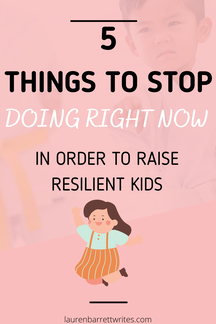
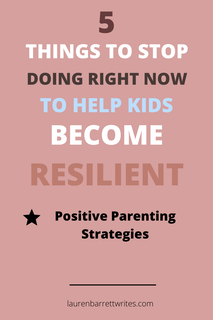
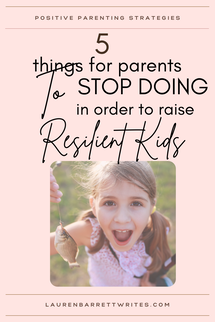
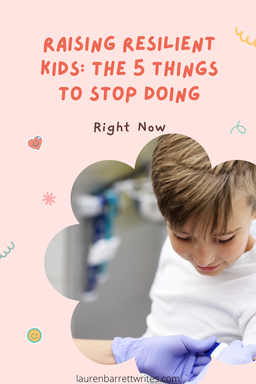
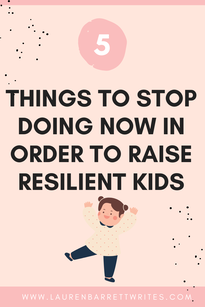
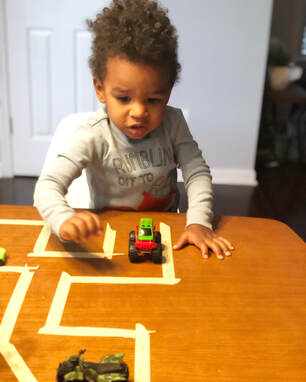

 RSS Feed
RSS Feed